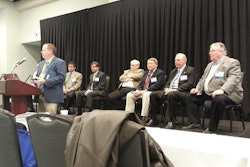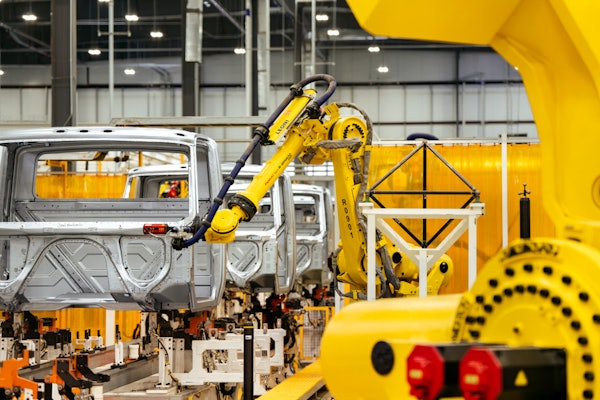The heavy-duty right to repair debate is ratcheting up.
Only two months after the automotive industry resolved its right to repair puzzle with a national Memorandum of Understanding (MOU), representatives from both sides of the heavy-duty debate have initiated discussions toward a possible compromise.
Earlier this year a meeting took place between the independent aftermarket’s Commercial Vehicle Right to Repair Coalition and the Engine Manufacturers Association (EMA).
By sitting down with the Coalition, the EMA has taken the lead on behalf of heavy-duty OEMs and their dealer networks to work toward a compromise for the industry.
The meeting is the culmination of an issue that’s been building in the aftermarket for some time.
Also known as the access to repair information initiative, right to repair has been a hot-button topic for several years.
The issue was initially identified when the first wave of trucks featuring onboard computers and advanced diagnostic software entered the independent aftermarket.
These advancements required proprietary technology to identify and clear most engine and advanced component fault codes. Without access to this information, independent service providers were forced to take these vehicles to their nearest dealers to have the codes identified and reset.
Since being discovered, the independent service channel says these occurrences have only increased.
The independent aftermarket has responded by taking action. The channel wants to sever its reliance on dealers to complete these repairs, and has decided it is willing to pay to acquire the repair and diagnostic information necessary to do so.
By forming the Commercial Vehicle Right to Repair Coalition, the independent service channel hopes to gain access to this information through negotiation or legislation.
“Our goals are to make sure a level playing field exists between the dealer and the service provider,” says Marc Karon, Coalition president. “We need to have the information necessary to repair the truck. We should not have to travel to a dealer to complete a repair.”
But acquiring this information has not been easy. To this point diagnostic service has been exclusive to the OEM dealer channel, and that’s not something manufacturers or dealers want to give up.
“Our supplier members sell to both OES and independent channels. If you look at this from the OEM dealer’s perspective, many of the larger [dealer groups] spend more than $1 million training their techs every year to be authorized service centers for this technology,” says Tim Kraus, HDMA president and COO. “They invest heavily for that access and they don’t want it given to anyone without the same requirements and qualifications.”
“We’re concerned about the dilution of our niche in that market,” adds Kyle Treadway, president at Kenworth Sales Company.
OEMs have other concerns as well, Kraus says. They fear distributing proprietary information to the aftermarket increases the risk of competitors’ incorrect use of the technology, with possible violation of intellectual property laws.
Even if diagnostic code information is something they are willing to give up, Kraus believes OEMs won’t do so unless they have some assurances; like not using the information for reverse engineering purposes, and training technicians using it to use it correctly.
Karon, who also serves as President of Total Truck Parts, says the Coalition has been aware of this concern for some time. It does not aspire to gain more than is necessary to complete a vehicle repair and has been adamant in its willingness to pay for that information, he says, as long as the cost is not greater than the cost for the same information that the dealer pays.
This is an unusual negotiation and must be treated like one, Karon says.
“Typically in negotiations you always try to create a scenario where both sides come out a winner. But there is nothing in the way of a financial gain in this negotiation for the OEMs and we know that,” he says. “They currently have an exclusive situation and we are asking them to change.”
He adds, “Their win in the negotiation is better service for their customers, who buy their vehicles.”
That approach is one of two reasons that led EMA to the negotiation table.
The other is the Coalition’s efforts in Massachusetts with the automotive aftermarket in working to create a state right to repair law. Officially signed in November, Massachusetts’ right to repair law was the first of its kind in the United States.
The automotive aftermarket used the momentum of the law to quickly create its national MOU and avoid further state legislation.
Joe Suchecki, EMA vice president of public affairs, believes the heavy-duty industry would benefit from a similar strategy.
“The industry OEMs are not interested in having this battle in every state,” he says. “We do think the best option is sitting down and talking.”
To this point, that is one aspect of a resolution all sides can agree on.
“It’s not practical” to have legislation in every state, says Treadway. Karon agrees, adding “we don’t want only legislative solutions.”
Moving forward, Suchecki says the EMA will do what it can to relay the Coalition’s requests to OEMs and offer possible solutions.
“As a trade association, if we come up with a solution and a member company doesn’t want to do it, we can’t make them,” he says. “But we can try to come up with an agreed upon set of rules, or a set of practices that our members would accept.”
Customer satisfaction will be an important aspect of any solution.
A heavy-duty right to repair solution should ultimately not only be acceptable to both sides, but should most importantly be designed to minimize customer downtime, says Kraus.
“I think both sides are in agreement that customers need to be taken care of fairly,” Treadway says.
Aaron Lowe, vice president, government affairs for the Automotive Aftermarket Industry Association (AAIA), says the automotive right to repair debate didn’t really take off until the public was involved. Customers demanding freedom for repairs is a significant negotiation tool, he says.
But fleet and OEM dealer customers have yet to enter the heavy-duty debate, says Ann Wilson, MEMA vice president of governmental affairs.
“There have not been any complaints in Massachusetts to the Attorney General’s office” regarding right to repair, she says, “and MEMA has not received feedback that heavy-duty [right to repair] needs to be addressed.”
Without customers pushing both sides, an immediate resolution seems unlikely. More than anything else, Suchecki says it is customers that will push OEMs to compromise.
“From the OEMs perspective, customer satisfaction is one of their key issues,” he says.
“A customer should be able to go to the guy that has the best service,” adds Karon. “Independent or dealer, it shouldn’t matter.”
In the meantime, the Coalition and EMA will continue to meet and look for possible compromises.
“I think this is a great first step,” Karon says.









